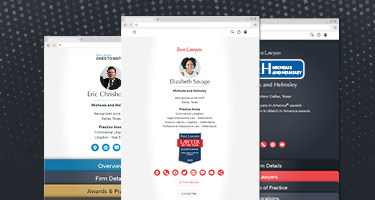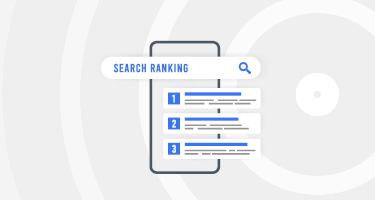Legal content keywords are essential for getting your work noticed by search engines. Without using the right keywords, your law firm could miss out on attracting potential clients who are actively searching for services like yours.
This article outlines a step-by-step approach to targeting the right keywords for your law firm’s SEO, helping you improve search engine rankings and attract potential clients.
Step 1: Identify Your Legal Niche and Client Search Behavior
Before diving into legal content keywords, it’s important to understand the core of your audience’s needs.
Understanding Client Intent
Keyword research starts with understanding what clients are looking for. Recognizing the intent behind their search helps you choose keywords that align with their needs.
List Your Practice Areas and Services
Begin by listing your law firm’s main practice areas (e.g., “personal injury lawyer,” “criminal defense attorney”) to narrow down the keyword focus and avoid being too broad.
Informational vs. Transactional Searches
Informational searches involve clients seeking general information. Someone searching “how to file a personal injury claim” is likely looking to learn rather than hire a lawyer. Transactional searches occur when clients are ready to act, such as “hire a personal injury lawyer” or “best family lawyer near me.” These searches are made by those ready to choose a legal service.
Step 2: Use Keyword Research Tools to Generate Ideas
Once you've identified your legal niche and client search behavior, the next step is to use keyword research tools to discover new opportunities. To effectively generate and optimize keywords for law firm SEO, consider using the following tools and metrics:
Free and Paid Keyword Tools
When it comes to legal content keywords, there are plenty of tools to choose from. Google Keyword Planner is a free option, while platforms like Ahrefs and SEMrush offer paid versions with advanced features. These tools allow you to analyze search behavior and identify keywords that can drive traffic to your legal content.
Metrics to Analyze
When reviewing keywords, concentrate on key metrics that determine their effectiveness. For example, "search volume" indicates how often a keyword is being searched, while "competition" shows how many others target the same word. The "keyword difficulty" level indicates the ease or difficulty of ranking for a specific term.
Step 3: Target Long-Tail and Geo-Specific Keywords
Long-tail keywords often yield higher conversion rates than broader search terms because they are more specific and cater to users with clear intent. These keywords can capture potential clients who are closer to deciding.
To further optimize your keyword strategy, use tools like Google Trends to analyze regional search data and uncover location-based keywords relevant to your practice, enhancing your SEO keyword strategy for legal websites.
For instance, a broad term like “DUI lawyer” may have high search volume, but a geo-specific term like “Best DUI lawyer in Colorado” targets clients with higher intent, increasing the chances of conversion.
You can also leverage Google My Business insights to uncover local search queries driving traffic, helping you focus on terms that will connect with your community.
Step 4: Evaluate Competitor Keywords and Address Content Gaps
To find the most effective legal content keywords, perform a competitor analysis by reviewing the keywords your competitors are ranking for. This allows you to gain insight within your niche while also pinpointing areas for improvement. Tools like SEMrush’s Keyword Gap Tool or Ahrefs' Site Explorer are ideal for gathering these insights.
If competitors rank for “personal injury claims,” your firm can develop comprehensive guides, case studies or video content on this subject. This approach not only aids in keyword optimization for attorneys but also boosts your content's relevance and authority.
Step 5: Optimize Legal Content with Keyword Placement
When optimizing legal content with keywords, it's important to incorporate them naturally. Avoid keyword stuffing, which is the excessive or unnatural use of keywords and prioritize readability. Focus on these areas for better search engine visibility:
Headings
Titles and subheadings (H1, H2, H3) organize your content and give readers a clear roadmap. Adding applicable keywords here helps search engines understand what your content is about, improving readability.
Meta Title & Meta Description
These elements appear in search results, the title is the clickable link and the description provides a brief overview. By adding related keywords, you help boost your visibility and entice users to click through.
Introductory Text
Place your target legal content keywords within the first 100 words of your copy to communicate their relevance to search engines.
Image Descriptions
Alt text is used to describe images, enabling search engines to index them effectively. It also supports accessibility for users with visual impairments. Properly using keywords in alt text can improve your site's search overall user experience.
Step 6: Monitor and Optimize Keyword Performance
To maintain strong SEO performance, it’s important to regularly review and adjust your keyword research for law firms' strategies. Tools like Google Search Console and Ahrefs Rank Tracker can help track keyword performance and provide insights into rankings.
Key metrics, including click-through rate, organic traffic and keyword rankings, should be assessed to determine success. Additionally, refreshing older blog posts with updated keywords ensures they stay relevant and continue to rank well, supporting long-term SEO growth.
Enhance Your SEO Strategy with Our Expert Services
Keyword research for law firms is crucial for SEO success in legal marketing. By prioritizing long-tail and local keywords, you can attract high-intent clients more effectively. Additionally, utilizing competitor analysis and continuous tracking will help refine your strategy over time.
To get started, consider conducting a keyword audit or exploring our SEO audit and strategy services available in our Demand Generation Bundles.































